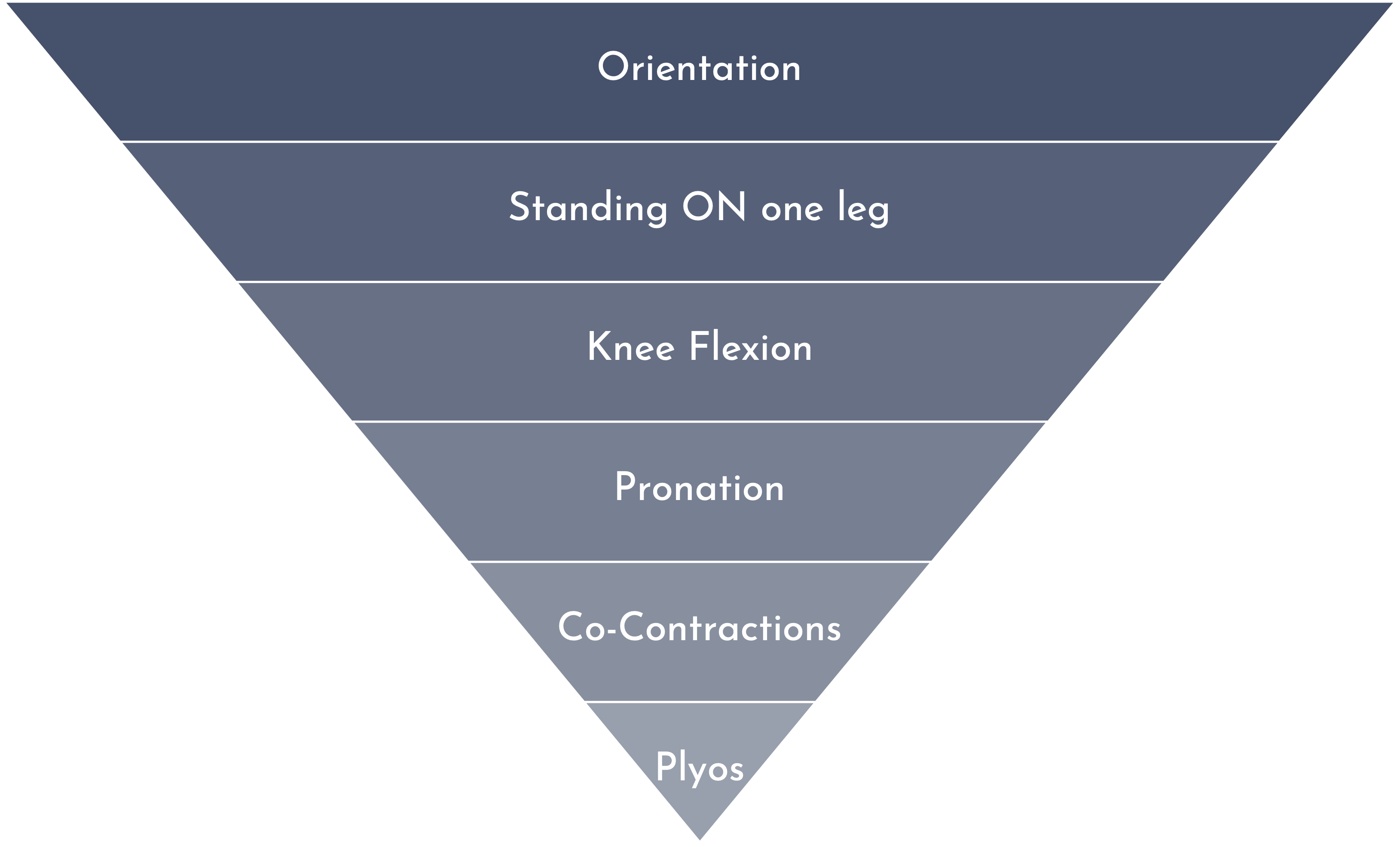
How a Runner Can Really Understand Foot and Ankle Health
Oct 03, 2023As part of my Run Club (a continuing education/support option for those that have gone through the Mentorship), we do a monthly coaching call. It’s part education, part Q&A, and part just hanging out with a group of really cool, like-minded women. It’s definitely my favorite hour of the month. The education piece for this month, by request from a member, is on foot and ankle health. We are going to go into way more depth on the call but I wanted to share the key tenets here as an example of how the whole body is connected.
We can’t fully talk about the foot without talking about breathing, the rib cage, the pelvis, the pelvic floor, and the knee. We also can’t fully talk about the hips, pelvic floor, shoulder, or knee without talking about the foot. Nothing happens in isolation!
Here’s a quick rundown of how all the parts are connected when it comes to foot and ankle health.

Orientation (aka. that “stack” I’m always talking about)
You need to be able to stand over your foot. Sometimes people have their center of mass more out in front of the foot. This makes your calves work overtime to help make sure you don’t fall on your face (hello chronic calf tightness!). Often these people will also grip the ground with their toes (just like the glutes we need to lengthen to strengthen). You can read more about this in my blog about chronic tightness.
Sometimes people have their center of mass more behind the foot. These people tend to lock out their knees (and struggle with knee flexion, more on that below) and struggle to get forward over the foot. I see this most in my uber-flexible people. These people also tend to grip the ground with their toes to help find overall stability. Starting with the ribcage is usually a good way to go with the stack.
Standing ON one Leg (like REALLY on it)
At mid-stance, we need to have our center of mass over the stance length. In general, this means three important things need to happen:

1 - pronation at the foot
2 - knee bent over midfoot (knee flexion coupled with dorsiflexion)
3 - internal rotation at the pelvis and length in the glutes
We’ll talk more about numbers 1 and 2 in a minute, but in my experience, they all have to happen together in your stride. Here’s a little more about that length in the glutes.
Knee Flexion
We need the knee bent over the midfoot to truly stand ON that leg and get the length in the glutes. When it comes to the pronation drills under the next point this is actually a lot harder than you might expect for some people so I’m giving it its own point! The biggest mistake I’m seeing with the pronation drills below is trying to force it from above. Focus on just letting the knee bend forward.
Pronation
We need pronation and supination (Read More about that here)! But most people need to learn to TRULY pronate first (even people who are overpronators). Pronation is the lengthening, widening, and loading of the tissues. Supination is shortening and becoming more rigid to help propel us forward. And as always, we need to lengthen and get all that relative movement between all the 26 bones in the feet to strengthen.

Again the knee bending forward needs to be the driving force. Don’t force it from the top. I find it’s best to start slow with something like these Heel Rocker Pronation Drills.
Co-Contractions (and Isometrics)
Strength in the feet doesn’t come from toe scrunches. It comes from being able to lengthen (pronate), being able to form a rigid lever (supinate), and being able to move over that rigid lever. Isometrics and co-contractions are also great for Achilles tendon health!
There are infinity options for these and I love strategically sprinkling them into all the Women’s Running Academy Workouts, but this has been a recent fave.
Plyometrics
Plyometric build strength and power in the foot/ankle complex. They are also great for tendon strength and performance, helping to lay down new collagen cross-links. As long as you’ve built up with the rest of the pyramid below you can’t go wrong with a good pogo!
I hope that this helps demonstrate that the foot and ankle are more than just the foot and ankle. Everything is connected!
That’s why in my Women’s Running Academy we get to know your body AS A WHOLE and fine-tune it to work well together using strategic strength training. Check us out HERE!
Your Coach,
Alison
Next on your reading list:
How a Runner Can Really Understand Foot and Ankle Health
Toe Gripping While Running? 3 Easy Drills to Help Those Little Piggies Unwind!
Ribs, Feet and Pelvic Floor: How to Understand Running Mechanics and Boost your Performance
Don't miss a thing!
Join my newsletter, be the first to know about what's coming up, and get even more great content!

